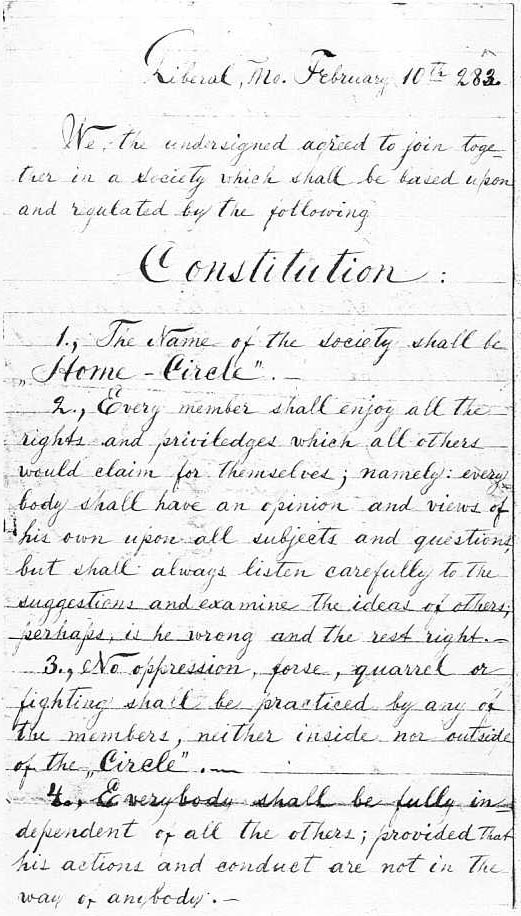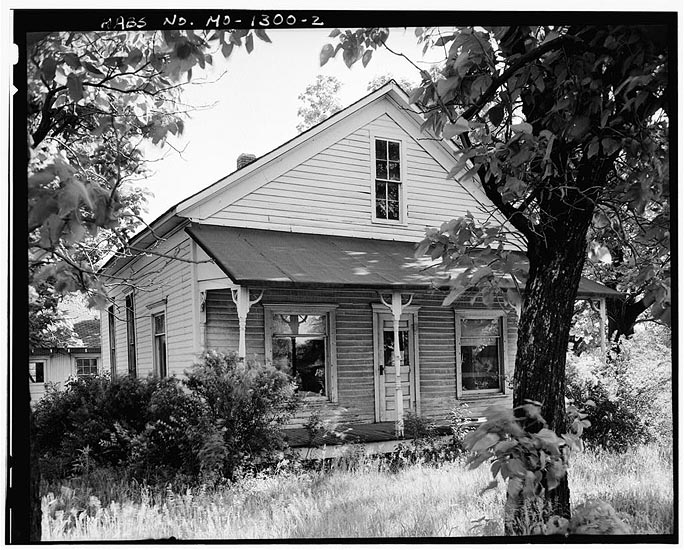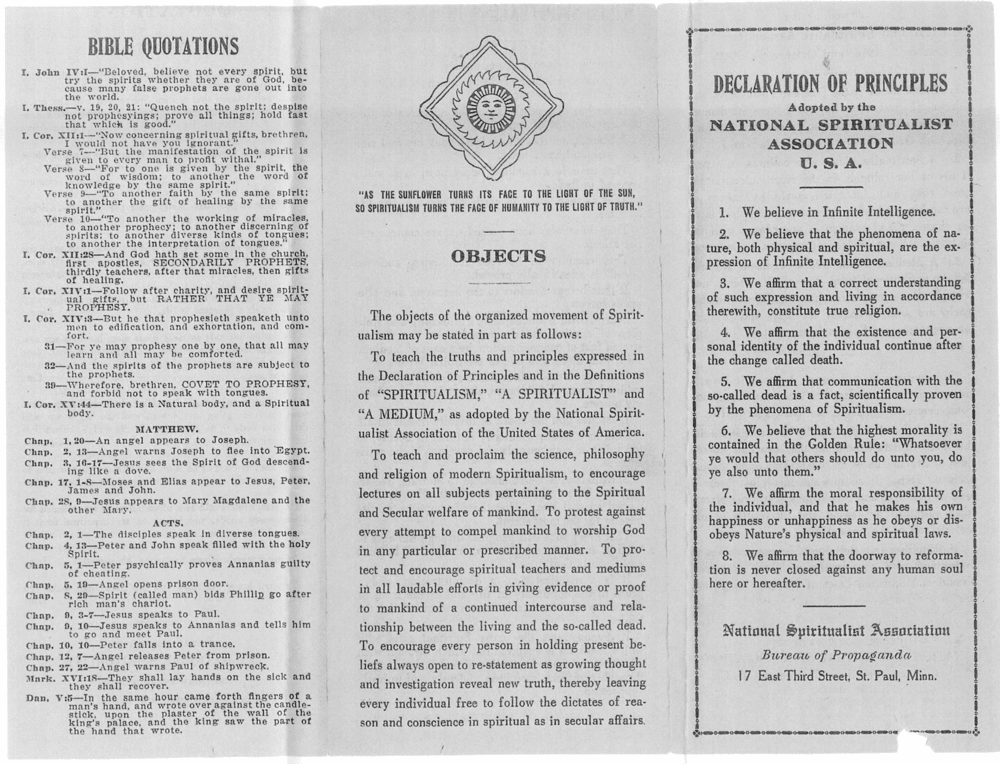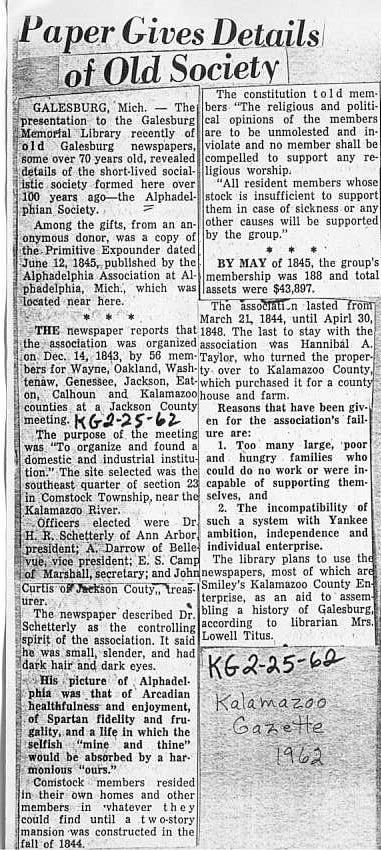Tag: noyes
-

Noyes Family Constitution
Being Free-thinkers who had been associated with socialist experiments and who had moved to Liberal, Missouri, which was expressly for liberals, it’s not surprising that the Noyes family would form their own family constitution. The document displays the year as being 283. The Dictionary of Missouri Biography notes that Liberal was utilizing a different dating…
-

Original Plat of Liberal, Missouri
The original plat of Liberal, Missouri, printed in the 1980 Centennial “Liberal News”. This image is courtesy of Nancy Benton. Right click “view image” to see full size. Liberal as it is today. View Larger Map
-

Images of Spook Hall
The below images are of “Spook Hall” in Liberal, Missouri, which served the spiritualists of the community, thus its name. Nancy Benton provided the below image of Spook Hall in winter, noting, “The building still stands today. During WW II it was used as a canning center. People could go there and preserve their food…
-

NATIONAL SPIRITUALIST ASSOCIATION DECLARATION OF PRINCIPLES 1914-1918
Spiritualism became quite popular in the mid to late 19th century. Interestingly enough, and not surprisingly, some of those who had been interested in the utopian movements were attracted to spiritualism. For example, James Allen Noyes, after the failure of the Alphadelphia Association, eventually moved to Liberal, Missouri, a town founded for free thinkers. Spiritualism…
-

THE BERLIN HEIGHTS COMMUNITY
The Alphadelphian experiment having failed in 1848, and James Allen NOYES’ father, James NOYES, having remarried to Susan WATERS, James Allen NOYES is given as having traveled to Berlin Heights, Ohio where another experiment in socialistic living was being undertaken. This experiment, initially launched by Dr. NICHOLS, was about 1856, and failed very shortly. I’m…
-

Alphadelphia Society Constitution
I’ve not yet transcribed the constitution into text. The following are links to gif files which are rather hefty in order to ensure legibility. The links open up the gifs in their own browser window. To continue, close browser window and return to this page. Many thanks to Barbara Triphahn who generously sent a beautiful…
-

Paper Gives Details of Old Society
Thanks to Nancy Benton who supplied the article. I did the transcription. * * * * * Paper Gives Details of Old Society Kalamazoo Gazette, 1962 GALESBURG, Mich – The presentation to the Galesburg Memorial Library recently of old Galesburg newspapers, some over 70 years old, revealed deatils of the short-lived socialistic society formed here…
-

COLONY LISTED 188 RESIDENTS IN MAY OF 1845
Thanks to Barbara Triphahn, the source of the article. * * * * * COLONY LISTED 188 RESIDENTS IN MAY OF 1845 Problem of Workers and Shirkers Rock on Which Experiment Failed Kalamazoo Gazette, Sunday Jan 24 1937 Most of the leaders of the Alphadelphia Association were of the Universalist faith and the preaching was…
-

SOCIETY PLANNED PUBLIC LIBRARY AND A SEMINARY
Thanks to Barbara Triphahn, the source of the article. * * * * * SOCIETY PLANNED PUBLIC LIBRARY AND A SEMINARY Site of Colony Obtained for Poor Farm After Long Controversy Kalamazoo Gazette, Sunday Jan 24 1937 The Alphadelphia Association was not a local affair, but comprised several hundred members throughout the state. Headquarters were…
-

DEATH OF E. B. KEITH IN 1934 REVEALS SOCIETY’S RECORDS
Source of article, Barbara Triphahn * * * * * DEATH OF E. B. KEITH IN 1934 REVEALS SOCIETY’S RECORDS Complete Data Obtained from Survivor of Communistic Association’s Last Chief Executive Kalamazoo Gazette, Sunday Jan 24 1937 Note: The following reminiscences concerning the Alphadelphia Association formed near Galesburg in 1844, are written by Smith H.…